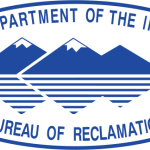- Industry: Government
- Number of terms: 15655
- Number of blossaries: 0
- Company Profile:
A U.S. Department of the Interior agency that oversees water resource management incuding the oversight and operation of numerous diversion, delivery, and storage projects the agency has built throughout the western United States for irrigation, water supply, and attendant hydroelectric power ...
Force or action of doing work. Measured in terms of the work it is capable of doing; electric energy, the electric capacity generated and/or delivered over time, is usually measured in kilowatt hours (kWh).
Industry:Engineering
One of five bills signed into law on November 8, 1978, as the National Energy Act. PURPA is a broad statute aimed at expanding the use of cogeneration and renewable energy resources. PURPA created a new class of power producers called Qualifying Facilities (QFs). PURPA requires electric utilities to buy power from non-utility generators who qualify under PURPA's criteria. Utilities must purchase this power, regardless of whether they need it, at a price equal to the incremental cost they would incur to produce power itself equivalent to the amount of power purchased from cogenerators or small power producers. This is called the utilities' "avoided cost." Some states set the avoided cost rate above true avoided cost in order to encourage QF development. It has been estimated that, between the years 1994 and 2005, electric consumers will pay roughly $38 billion above utilities'current avoided costs for power purchased under PURPA's requirements.
Industry:Engineering
Something (e.g., a dam) that creates the potential for adverse consequences such as loss of life (LOL), property damage, and adverse social and environmental impacts. From a dam safety perspective, impacts may be from floodwaters released from dam structures or waters released by partial or complete failure of the dam. In this case, impacts would be to a defined area downstream. Impacts may also be to an area upstream of the dam from effects of backwater flooding or effects of landslides around the reservoir perimeter.
Industry:Engineering
Water delivered to a user. Applied water may be used for either inside uses or outside watering. It does not include precipitation or distribution losses. It may apply to metered or unmetered deliveries.
Industry:Engineering
The rate of water entry into the soil expressed as a depth of water per unit of time in inches per hour or feet per day. The infiltration rate changes with time during irrigation.
Industry:Engineering
Set of all food chains or hierarchic arrangements of organisms as eaters and eaten in a prescribed area when tabulated by numbers or by biomasses, usually takes the form of an inverted pyramid.
Industry:Engineering
A compilation of independent technical reports that evaluate the design, construction, and performance of a dam for its structural and hydraulic integrity using available data; identify existing or potential dam safety deficiencies; and recommend future actions appropriate for the safety of the dam. Evaluation includes review of hydrology, geology, seismicity, seepage, structural adequacy, design criteria, construction, operation, instrumentation records, existing field conditions, and past performance. See evaluation report. See overall safety of dams classification.
Industry:Engineering
A NEPA compliance document which affirms that an environmental assessment found that alternatives were evaluated and a proposed action would have no significant impact on the human environment.
Industry:Engineering
An arrangement in which customers can purchase electricity directly from any supplier in the competitive market, using the transmission and distribution lines of electric utilities to transport the electricity.
Industry:Engineering
Surface drainage area above a specified point on a stream. Area which drains into or past a point. A geographical portion of the Earth's surface from which water drains or runs off to a single place like a river. The area of land that drains its water into a stream or river. All the land and water within the confines of a certain drainage area. Vertically, it extends from the top of the vegetation to the underlying rock layers that confine water movement. An area of land that contributes runoff to one specific delivery point.
Industry:Engineering
